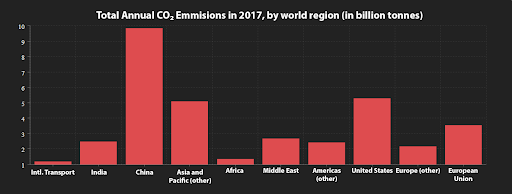Amazon fires bring the heat on global warming discussion
by Natalie Maronas

Graph by Natalie Maronas
Rising waters, smokey air and absurd temperatures are environmental nightmares that are starting to be more plausible. Signs of this are even visible now, with hotter summers and melting ice caps being recurring in global warming discussions. Yet, our fears only continue to grow as time is running out to fix what we have broken.
With the recency of the Amazon fires in Brazil this summer, and with more pressure in U.S. Congress for action on climate change and biodiversity, the importance of environmental protection has escalated as global warming becomes a larger threat. Advocating for awareness has grown, and recently with the fires, the damage possible without this is being made clear.
“Companies are still relying heavily on using fossil fuels for production, and I don’t see anything being done to stop it,” said junior Jenna Luna. “I just think there needs to be more concrete, visible changes in order for us to save the Earth.”
Even though effects are predicted to happen later in the future, there are still major concerns over what global warming might cause. With over two billion tons of CO2 being produced from coal burning and transportation, carbon emissions are causing atmospheric deterioration and rising temperatures. With the U.S. contributing 14 percent of emissions, scientists believe that temperatures could increase by 10 degrees Farenheit over the next century. While critics say that temperature is in a slowdown, the temperature change is already evident with melting glaciers, deterioration of wildlife and rising sea levels that could greatly hurt islandic areas such as Florida. This even explains the developments with Hurricane Dorian as it gathered in strength due to the Atlantic ocean’s heat.
“With how much damage we’ve done now and it evident across the world, it’ll only worsen if nothing is done about it,” said Environmental Science and AP Computer Science teacher Matthew Feiler. “Before where the Florida beaches were extended longer, now, during high tide and rainy seasons, it’ll flood all the way to A1A. Who knows if Florida will even exist in a couple of years.”
The most worrying presence of climate change has only surfaced through the Amazon fires that started in Aug., climbing to 156,000 total fires with no signs of stopping with the October dry season. $22.2 million in international aid was sent in concern over the burning Amazon contributing 38 out of 415 parts per million of carbon in the atmosphere. While denied by Brazilian President Jair Bolsonaro due to the fire’s size, it served as a symbolic expression of concern internationally for preserving the forest.
“The size of the fires are too unnatural to be something that happens regularly and not enough people are donating aid either. I just think the fires are a warning for what’s to come,” said senior Sophia Wu.
A push to address these issues in the United States are being made by advocating for more aggressive legislation for protection. Environmental Protection Agency became prominent in events like the G7 summit in August with sessions specifically dedicated to global warming, energy usage and wildlife protection. Even though there has been pushback in government to promote awareness, as evident from President Donald Trump not attending the session while advocating for fossil fuel consumption for economical benefits, there are still ways for citizens locally to help with the shift. On a state level, global warming could be slowed through reduced oil usage and caps on carbon emissions companies produce. Individuals can also contribute through using eco-friendly technology and renewable energy usage, all while spreading awareness on scientific backing and significance of these issues.
“With teaching, I’ve tried to expand awareness even among my students,” Feiler said. “Last year, my students created an app at my old school to help keep track of their energy usage in the classroom with common devices, and they could track how much energy they were saving by shutting off lights, unplugging laptop carts and disconnecting printers.”
Although the future looks grim for our Earth, there is still hope that environmental degradation becomes known to all and that there are preservation efforts. With reforms and debates happening in Congress and signs of assistance from other countries with the Amazon fires, there is a chance for restoring our environment to what it once was.
“I don’t think there could ever be enough action. We’re far below what is needed and what is needed might still not be enough,” Feiler said. “There’s no one person to blame either, whether it be the government or the people. People just need to be more active, not just informed, on how it’s going to affect their future.”
